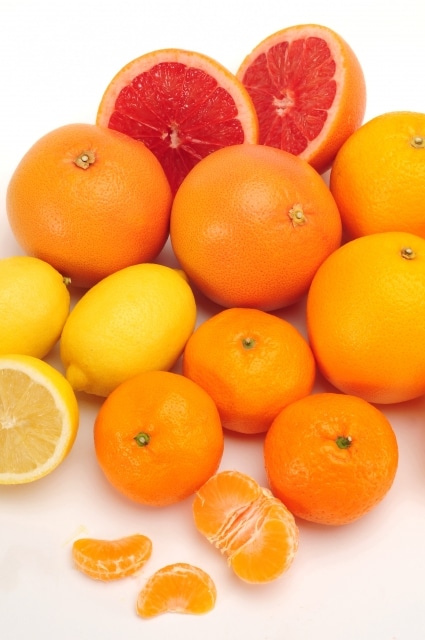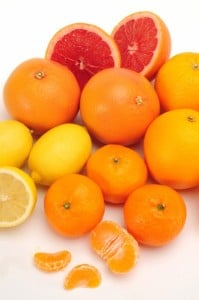
However, the second means that the ‘flavour’ can be artificial — created by a chemical such as isoamyl acetate, an organic compound formed from isoamyl alcohol and acetic acid.
It is often used in many pear and banana-flavour sweets and snacks because it gives off that odour in its reduced form.
However, even more often it is used in solvents, and until recently was used extensively in the aircraft industry for stiffening and wind-proofing fabric flying surfaces. Not the most appealing of thoughts.
The real problem — and one that we should all be looking out for — is that manufacturers are beginning to combine the use of ‘real’ ingredients with synthetic ones, so it’s often impossible to avoid eating chemicals alongside your ‘real’ fruit.
So, for example, while some products, such as Nestlé’s Munch Bunch Fromage-Frais, boast of being made ‘with real fruit puree’, a look at the life small print shows they also contain ‘flavouring’.
What this ‘flavouring’ is exactly is not labelled on the packet (that is not a legal requirement), but it is often synthetic — and, worryingly, how much of the synthetic flavouring is used does not have to be stated.
“No artificial colouring” is a confusing statement to understand. What you and I call artificial and what the food industry calls artificial are surprisingly different.
While we might expect food with no artificial colouring to be made only with colours occurring from fresh ingredients, there are a number of ‘natural’ colours that appear to be anything but.
Cochineal, the commonly used red colouring I found in Mr. Kipling’s ‘no artificial colouring’ vanilla slices, is made from the eggs of a beetle that lives on cactuses.
Is it Natural? Well, according to the rules it is. You may argue that petrol is natural, in so much as the crude oil it comes from was once a plant.
Titanium dioxide, another of the ‘natural’ colourings I found in the vanilla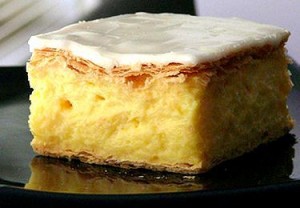
Lutein is extracted from marigolds and is also used to make battery chickens’ skin look nice and yellow. ‘Not artificial’ does not mean natural — simply ‘not synthetic’.
The truth is that these and many other colours are used principally because they are cheaper, and they also last longer than colours from, say, fruits.
Tradition and fierce lobbying by the powerful food industry has kept them on the list of ‘not artificial’. The difference with Mr. Kipling is that they list their colours: many manufacturers now merely put ‘colouring’ or ‘naturally sourced colouring’ on the ingredients list.
But if a label does not boast about using fruit-derived colours, you can be sure they’re using some you may well find less attractive.
“Real”, is another much-abused word and “Fruity” is another. But how much “real fruit” is actually in your ice lolly?
‘Real fruit’, often used in ice lolly and soft drinks packaging, can mean fruit concentrate (which is a boiled-down and stabilised ‘concentrate of fruit’).
And there is no law governing how much ‘real fruit’ you have to use in order to put the label on the front of your product: most ice lollies are largely sugars and water, with the fruit content being one part in 20.
This is another term that has more or less lost any meaning in food. A recent Trading Standards Officers’ survey found more than 80 different uses of it in food marketing, of which 79 per cent were ‘unacceptable or misleading’, and in 1989 the then Ministry of Agriculture issued voluntary guidelines asking manufacturers
to avoid phrases such as ‘natural goodness’ or ‘nature’s way’. It was ignored.
Children’s favourite Capri-Sun tropical juice drink boasts ‘nothing artificial at all’ on the label, yet read the ingredients and you’ll find artificial sweeteners such as acesulfame K and sodium saccharin, both chemical compounds that some experts warn could be carcinogenic.
I found only tiny amounts of fruit concentrate listed, and more sugar content than you’d find in most real fruit.
‘Juice drink’ is another of those labelling red-lights: according to European legislation ‘fruit juice’ and ‘fruit juice from concentrate’ must have minimum amounts of fruit. But ‘fruit drink’ has no rules.
The only way to guarantee a ‘real’ fruit drink is to go to the greengrocer, buy some fruit, cut it up and juice it in a mixer yourself.
All of us need to eat fat as part of a healthy diet. The key question is what sort and how much.
Food manufacturers are faced with a quandary — fat carries taste, and if you want to take it out of a product you usually have to replace it with things that consumers have been warned against: salt, sugar and flavourings.
McVitie’s Chocolate Digestive Lights, for instance, contain 30 per cent less fat than normal chocolate digestives, but they also contain more sugar than the full-fat ones.
Tricks played with ‘fat’ on labels include ‘lower fat’ — which often merely means that a high-fat product has had the content trimmed a little, not that it is healthy.
Young’s Seafood recently got a rap over the knuckles from the Advertising Standards Agency for misleading customers about the amount of saturated fat in its Chip Shop cod fillets.
A TV advert it ran, boasting the fillets were ‘still below 5 per cent saturated fat’, implied that the fish was low in this dangerous fat that is linked to heart disease.
However, for a food product to be officially ‘low’ in saturated fat, only 1.5 per cent or less of the total product can contain saturated fat, according to government rules.
There used to be just a slimmers breakfast cereal, but it now includes snack bars that contain little fat, but a huge amount of sugar.
Food manufacturers have found there’s money to be made by exploiting the fact that few of us spend much time studying a product — research says the average time spent at the supermarket shelf before making a choice is seven seconds. So we rely on trust and logos we associate with health.
Kellogg’s Special K, originally just a breakfast cereal aimed at slimmers, has been expanded to a wider brand including snack bars that contain little fat, but a huge amount of sugar.
Its 23g bars which boast of having fewer than 90 calories actually have more than a third of their weight in sugar — twice as much as is contained in some ice creams, and putting them well into the Food Standards Agency’s ‘high in sugar’ bracket.
In 2008, Innocent, a brand that specializes in healthy drinks, had to 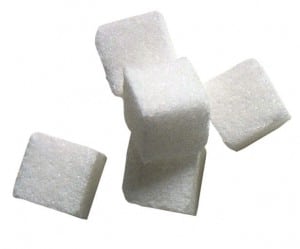
If there’s no sugar then there will almost certainly be other sweeteners, such as aspartame and acesulfame K.
While these are good alternatives for people worried about calories, manufacturers using them now have to warn that they are a ‘source of phenylalanine’ — a chemical that can cause severe health problems to people with a particular disorder.
Very high doses of this chemical have been linked to minor effects on health.
The word “fresh” is a much-abused term has troubled government regulators for decades. Effectively, it means little more than ‘not frozen’ and uncooked — but products can have been chilled or, as with fish, kept on ice.
Salads, fruits and meat can be kept in ‘modified atmosphere’ packaging that uses gases or vacuum to stop them going off.
‘Freshly squeezed’ means something should have been processed within two weeks of its use-by date, and there are rules governing ‘farm fresh’ poultry and eggs.
Under EU rules, ‘fresh’ poultry is just a term governing how the meat is chilled, not how long it has been since the bird was killed.
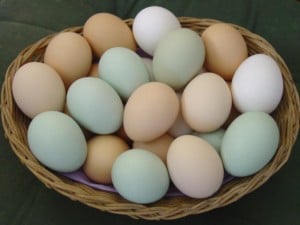
A few months ago a well-known food store was reprimanded by the Advertising Standards Authority for TV adverts promoting ‘fresh bread, baked from scratch’, when it was baked from
scratch in only around a quarter of its stores. In most stores, the ready dough is shipped in from centralized processing plants.
By Milo Johnson

